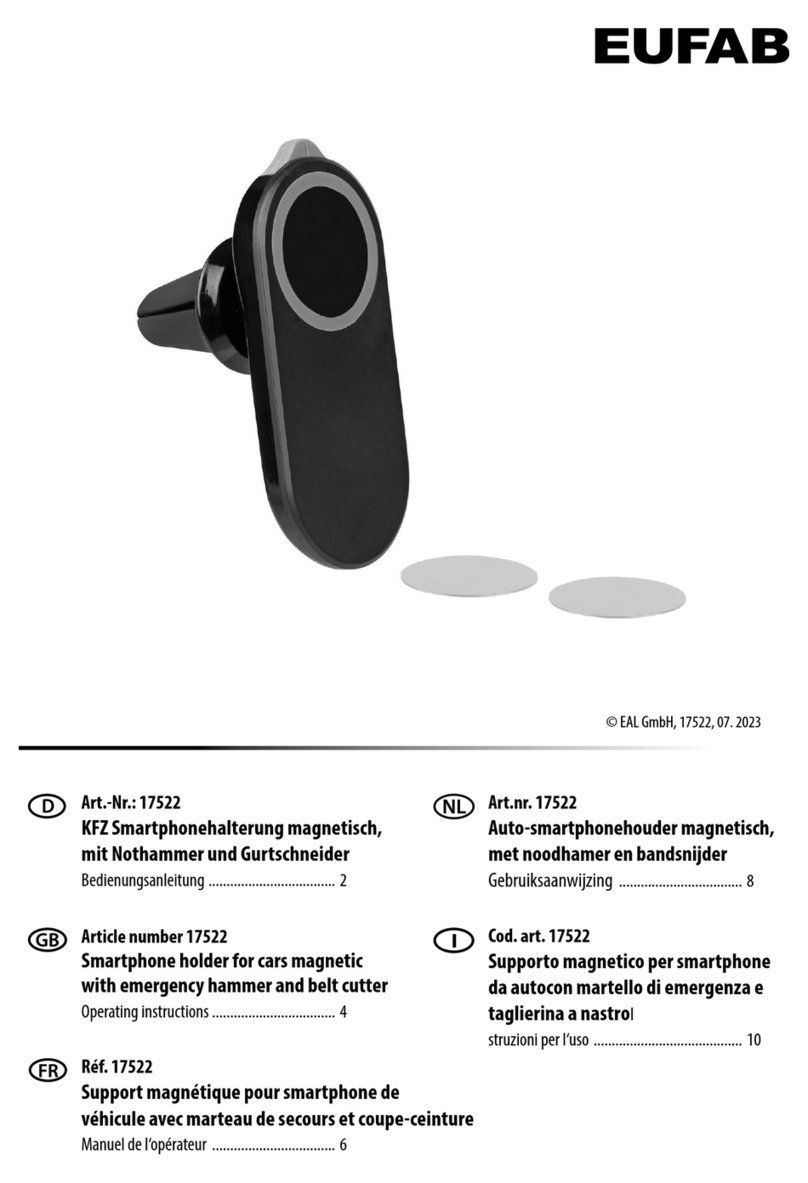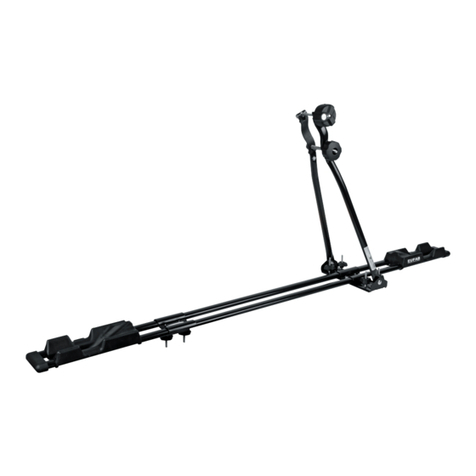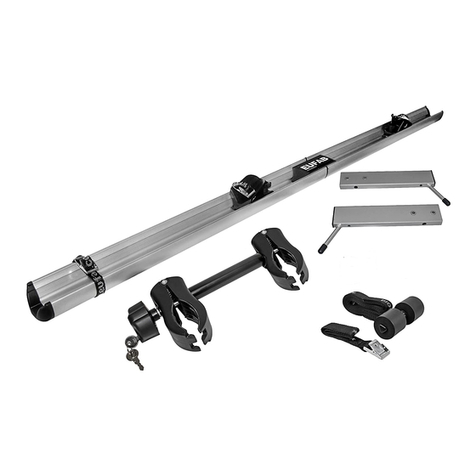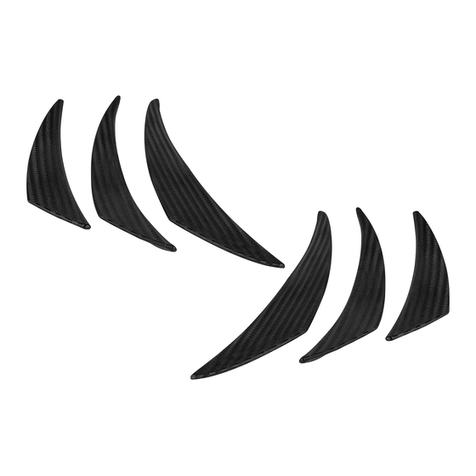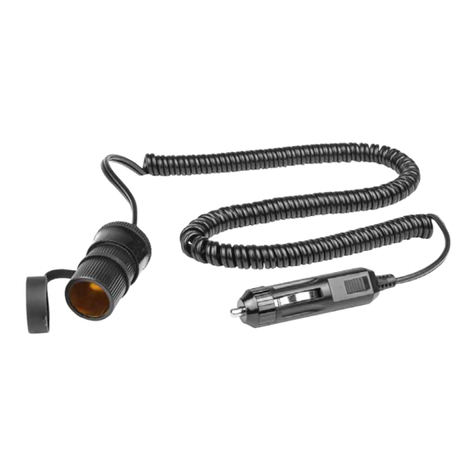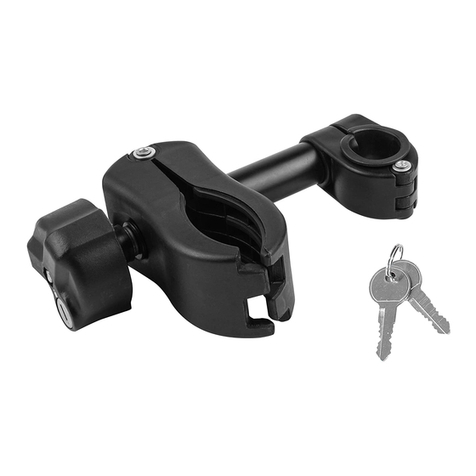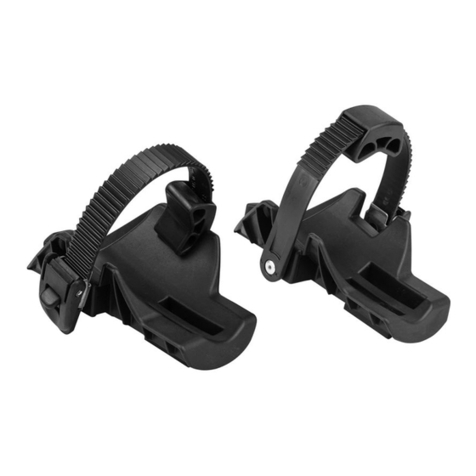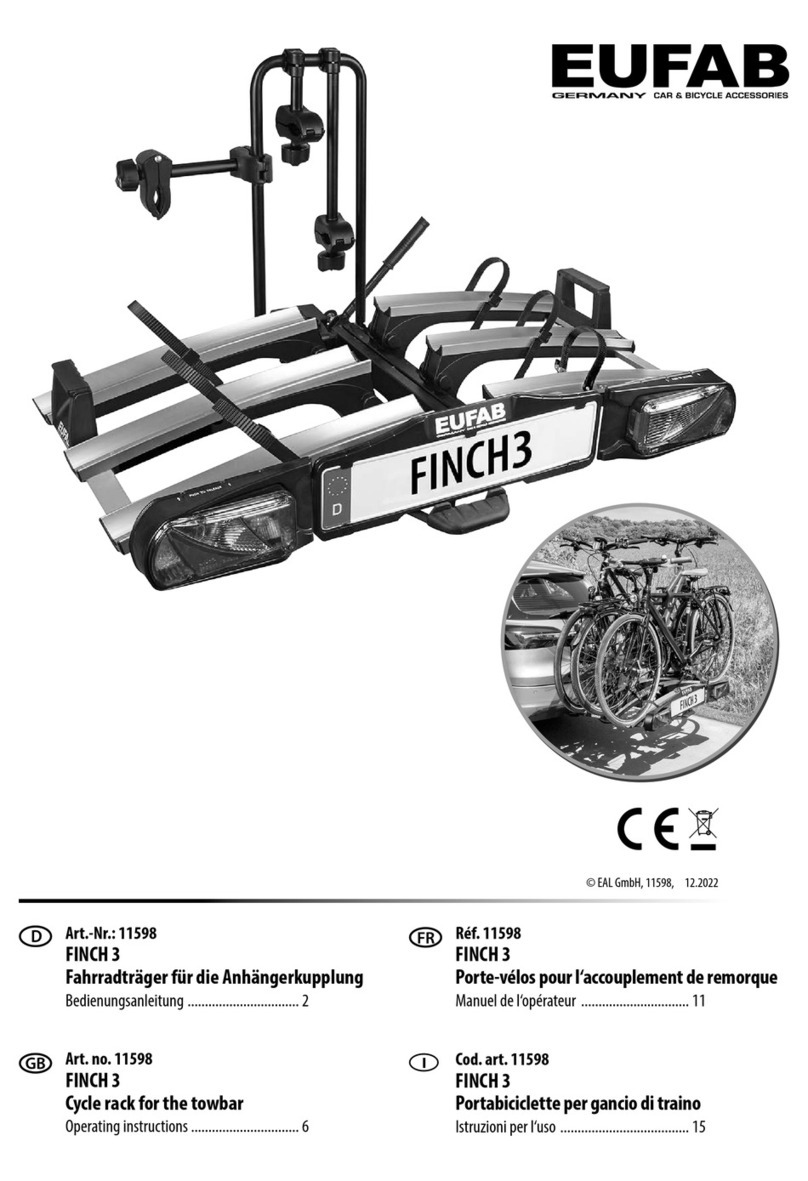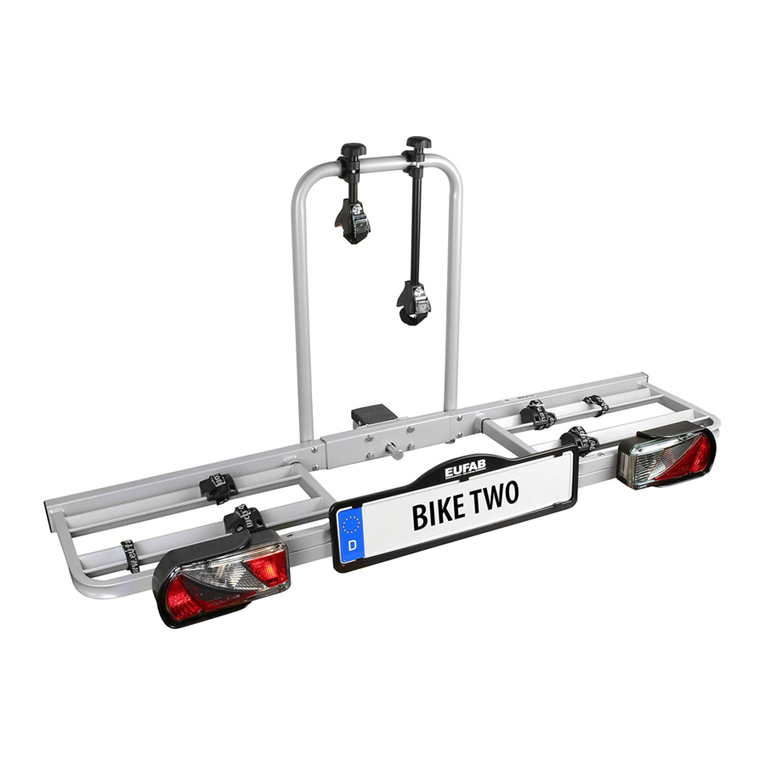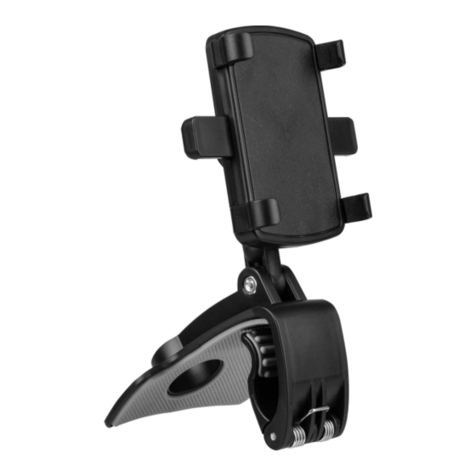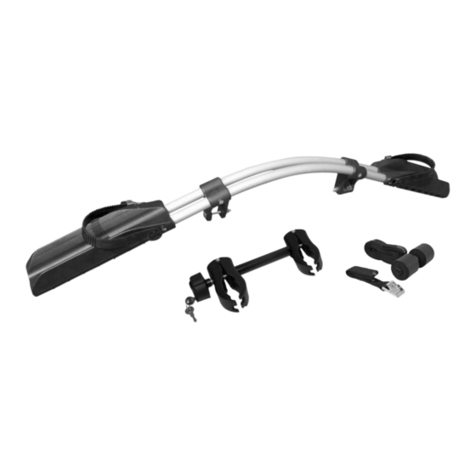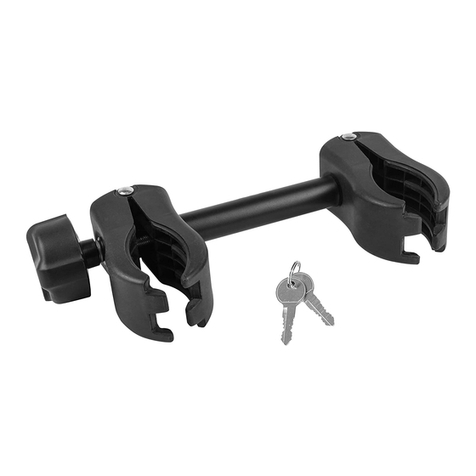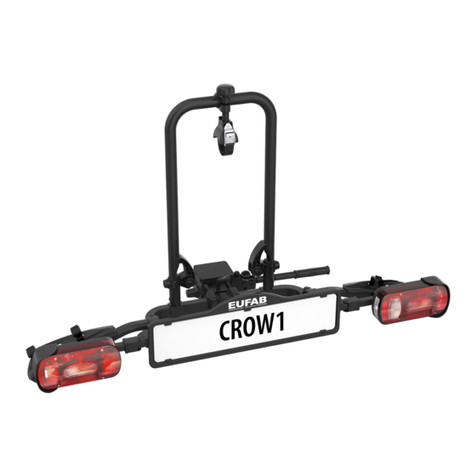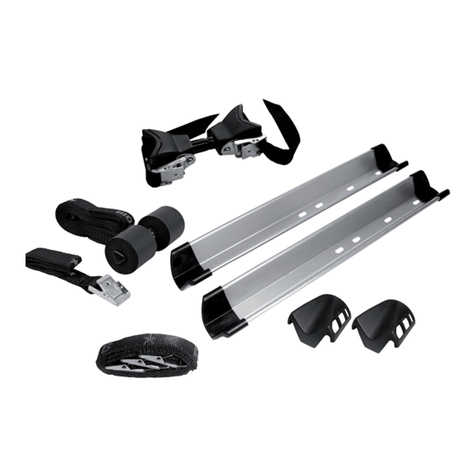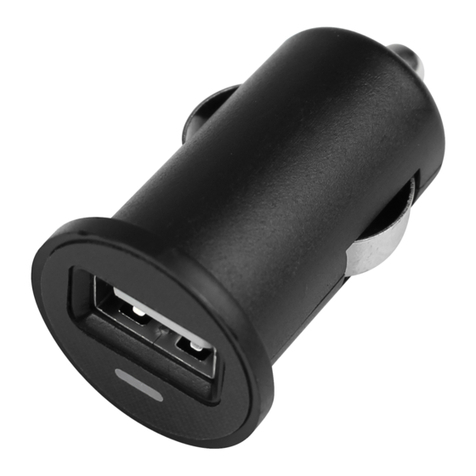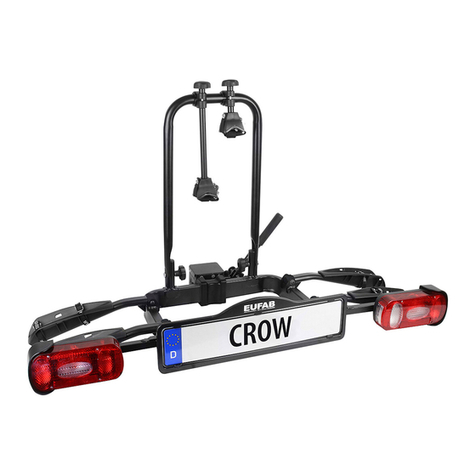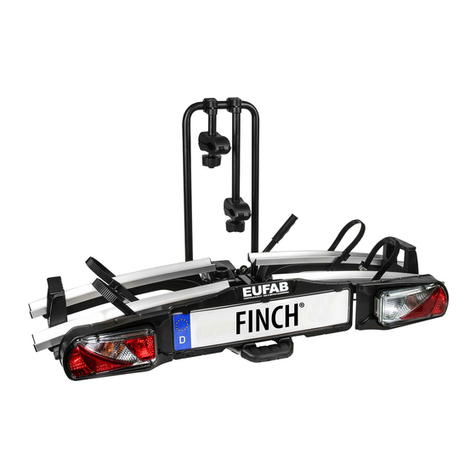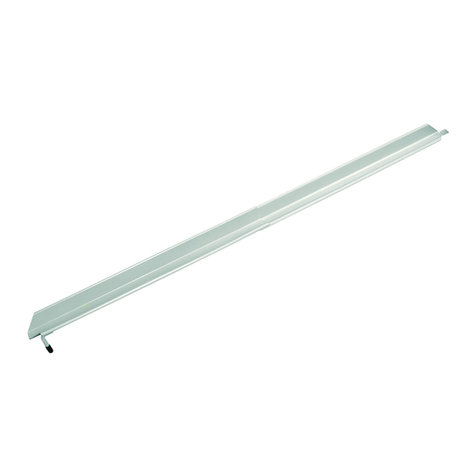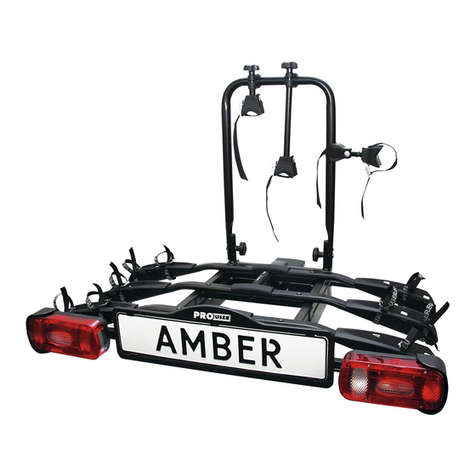
9
WARNING
Read the operating instructions through carefully prior to initial use and observe all of the safety notes!
Not observing such may lead to personal injury, damages to the device or your property!
Store the original packaging, the receipt and these instructions so that they may be consulted at a later date!
Prior to initial use check the contents of the packaging to ensure that they are in perfect condition and complete!
1.PROPER USE OF THE PRODUCT
The AMBER IV bicycle rack is mounted to the trailer tow bar of a car and is designed for the transportation of up to two bicycles.
Intended use also includes the observation of all information provided in these operating instructions, particularly the observance of safety instructions. Any
other use is considered improper and can lead to property damage or personal injury. EAL GmbH assumes no liability for damage resulting from improper use.
2. SCOPE OF DELIVERY
1 x Base frame
8 x Wheel rail
1 x Lamp mount set
1 x U-bracket
2 x Frame holder, short
1 x Frame holder, long
1 x Frame holder, wheel to wheel
4 x Plastic cover
12 xTensioning strap, short
1 x Tensioning strap, long
1 xTension-relief strap, two-piece
16 x Lock screw M6 x 50
16 x Washer 17,8 x 6,5 x 1,1
16 x Nut M6
1 x Cross-headed screw M5 x 12
1 x Washer 9,8 x 5,4 x 0,9
1 x Spring washer 8,4 x 5,5 x 1,5
2 x Cross-headed screw M5 x 35
2 x Spring washer 8,1 x 5,5 x 1,2
2 x Washer 9,7 x 5,3 x 0,9
2 x Lock screw M8 x 60
2 x Washer 15,8 x 8,5 x 1,1
2 x Knob nut M8
Cable tie
3. SPECIFICATIONS
Dead weight: 19.5 kg
Payload: 30 kg (at 50 kg supporting load)
40 kg (at 60 kg supporting load)
max. 55 kg (at 75 kg supporting load)
max. 60 kg (at 90 kg supporting load)
Material: Steel
Electrical connection:13-pin connector
3.1 TOW BAR REQUIREMENTS
• The trailer tow bar must be approved in its construction.
• Ball and ball rod must have been forged in one piece.
• Only mount the bicycle rack to a coupling of steel St52-3, grey cast iron GGG52 or higher quality.
• The D-value of the tow bar ball must be at least 7.6 kN
• Never mount the rack to a tow bar made of aluminium, other light metals or plastic.
OVERVIEW
Bicycle rack „AMBER IV“ for trailer tow bar
1.PROPER USE OFTHE PRODUCT 9
2. SCOPE OF DELIVERY 9
3. SPECIFICATIONS 9
3.1TOW BAR REQUIREMENTS 9
4.SAFETY NOTES AND IMPORTANT INFORMATION 10
5. OPERATING INSTRUCTIONS 11
5.1 MOUNTINGTHE BICYCLE RACK 11
5.1.1 MOUNTINGTHE WHEEL RAILS ONTHE BASE FRAME 11
5.1.2 MOUNTINGTHE LAMP MOUNTS 11
5.1.3 SECURINGTHE LIGHT MOUNT TO THE BASE FRAME 11
5.1.4 MOUNTINGTHE UBRACKET 11
5.1.5 MOUNTINGTHE FRAME HOLDER 11
5.1.6 MOUNTINGTHE LICENSE PLATE HOLDER 11
5.1.7 INSERTINGTHE LICENSE PLATE 12
5.1.8 LAYING ELECTRICAL CABLES 12
5.1.9 ATTACHINGTHE PLASTIC COVERS 12
5.1.10 MOUNTINGTHE SHORTTENSIONING STRAPS 12
5.2 MOUNTING THE BICYCLE RACK ONTHETRAILERTOW BAR 12
5.3 MOUNTING THE BICYCLES TO THE RACK 13
5.4 USINGTHETENSIONRELIEF STRAP 13
5.5 FOLDING OUT THE BICYCLE RACK 14
5.6 FOLDINGTHE BICYCLE RACK UP 14
6. MAINTENANCE AND CARE 14
7.NOTES FOR ENVIRONMENTAL PROTECTION 14
8. CONTACT INFORMATION 14






